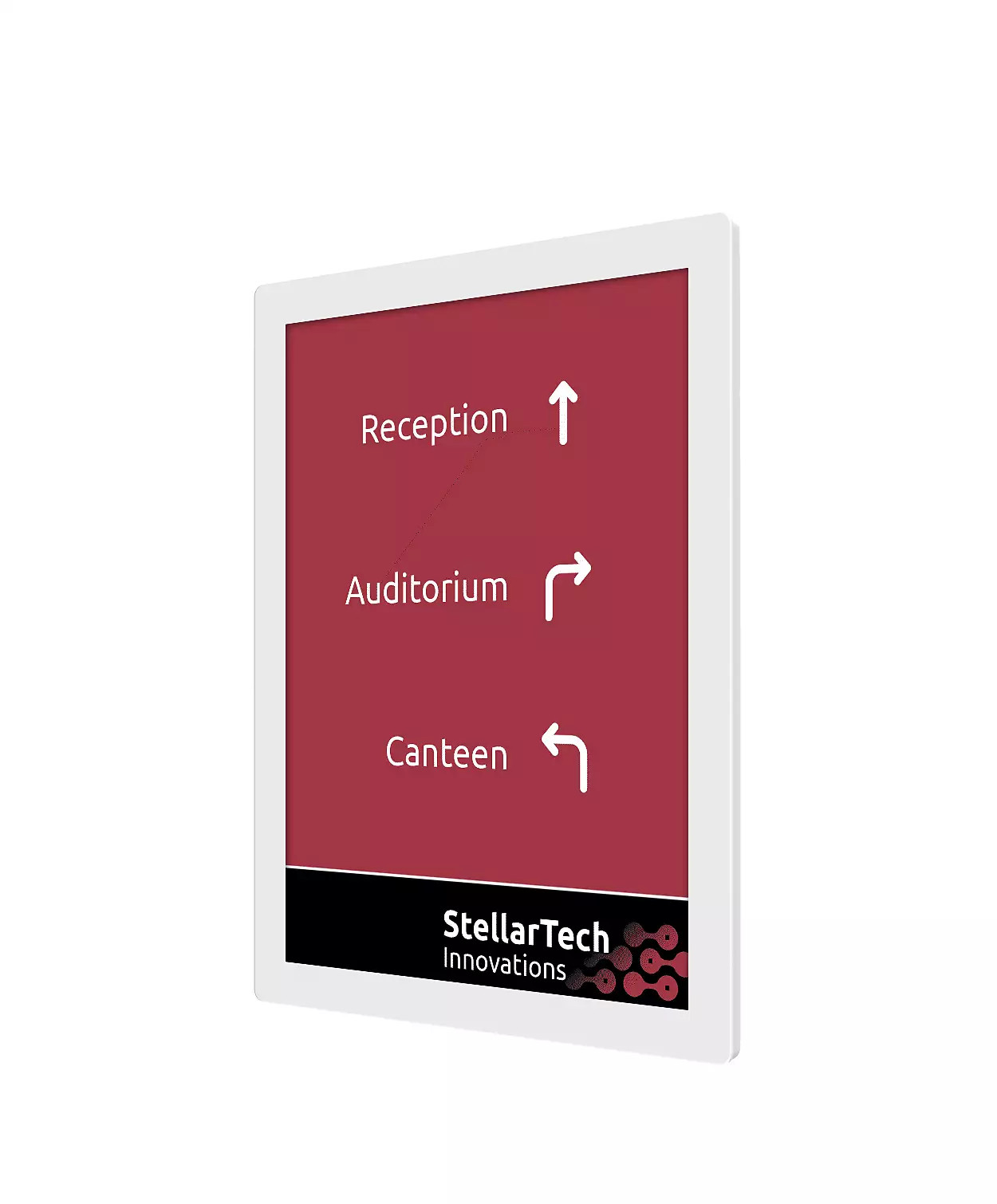

£801.97*
- Resolution 1600 x 1200 UXGA
- Panel type E-Paper
- Aspect Ratio 16:9


Product information
Sustainable and digital: the 13-inch e-paper display for modern signage
The Philips Signage Solutions ePaper Signage 13BDL4150IW/00 is set to revolutionise signage and information technology by eliminating the need for permanent power consumption. This innovative, full-colour 13-inch display offers a sustainable alternative to traditional paper posters and allows you to flexibly exchange static content without the need for paper.
Technical data at a glance:
- Screen size: 13.3 inches (33 cm diagonal)
- Resolution: 1600 x 1200 pixels, aspect ratio 16:9
- Display colours: 60,000 colours, including blue
- Operating system: Android 11
- Processor: Android SoC processor
- Internal memory: 16 GB
Sustainable innovation for modern signage
The Philips e-paper display allows you to replace traditional paper posters digitally, saving not only resources but also operating costs. By displaying static content without the need for power, this display helps to align your company with sustainability goals and reduce your environmental footprint.
Flexible control thanks to the Android platform
With the integrated Android 11 operating system and the powerful Android SoC processor, you benefit from a stable and secure platform. Native support for Android apps and easy installation of web applications give you uncomplicated and intuitive control of the display via an internet connection.
Efficient remote management and comprehensive connectivity
Thanks to PPDS Wave support, you can manage and control the device remotely anytime, anywhere. This cloud-based solution makes it easy to update content, monitor firmware and manage playlists, saving you time and energy. At the same time, a range of interfaces such as Ethernet, Wi-Fi, USB and micro USB enable flexible connection and smooth data exchange.
Optimal readability and versatile positioning
The display is highly legible, even in direct sunlight, making it ideal for use in a wide range of environments. Flexible alignment in both landscape and portrait mode allows you to optimise the integration of your information systems – 24/7, without the need for a permanent power supply.
Technical data
| Name | Philips 13BDL4150IW/00, 13", Display |
|---|---|
| Article number | 1000031720 |
| GTIN/EAN | 8712581804527 |
| Manufacturer SKU | 13BDL4150IW/00 |
| Model name | 13BDL4150IW/00 |
| Brand | Philips |
| Product Type | Non-Touch Display |
| Technology | LCD |
| Panel type | E-Paper |
| Resolution | 1600 x 1200 UXGA |
| Diagonal | 13" |
| Aspect Ratio | 16:9 |
| Screen finish | Matt |
| run-time | 24/7 |
| Support - VESA | 100 x 100 |
| Frame width | 18.5 mm |
| Operating system | Android |
| RAM | 2 GB |
| Inputs | 1x USB-A |
| Outputs | 1x 3,5mm Jack , 1x USB-A |
| wireless technology | WiFi |
| Product width | 30.64 cm |
| Product height | 23.88 cm |
| Product depth | 3.66 cm |
| Weight | 1.3 kg |
| Colour | White |
| EEK Spectrum | A to G |
| Delivery contents | Power cable |
| Condition | New |
| Warranty | 36 Month |
| Warranty type | Onsite Repair Service and support information |
Product safety
| Person responsible for the EU |
|---|
| Philips Consumer Lifestyle B.V. |
| High Tech Campus 52 |
| 5656 AG Eindhoven |
| Netherlands |
| Unternehmenskommunikation@philips.com |



